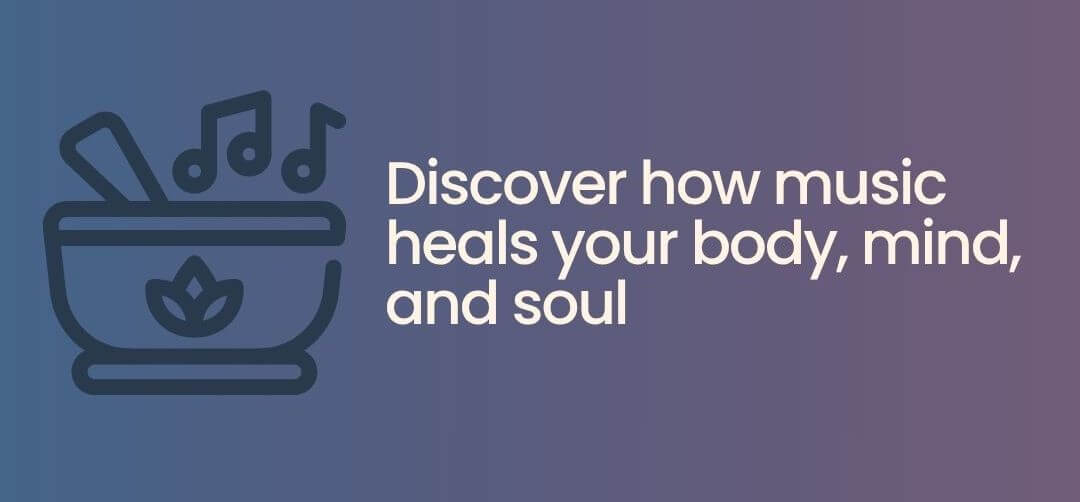Blog
The Powerful Connection Between Music and Wellness

From ancient healing rituals to modern-day therapy sessions, music has always played a central role in human life. But what is it about music that makes us feel so good? The answer lies in the deep, transformative connection between music and wellness—a relationship that science continues to explore and confirm.
Whether you’re looking to reduce stress, boost your mood, or feel more connected to yourself and others, music offers an accessible and powerful pathway toward better health. Let’s dive into how the bond between music and wellness can positively shape your daily life.
Music and Wellness: More Than Just Background Noise
Music is not just entertainment. It actively engages your brain, body, and emotions. Studies have shown that listening to music can:
- Lower cortisol levels (the hormone responsible for stress) (Khalfa et al., 2003)
- Release dopamine (the “feel-good” chemical) (Ferreri et al., 2021)
- Reduce heart rate and blood pressure (Knight & Rickard, 2001)
- Improve sleep quality and relaxation (Harmat et al., 2008; Lai & Good, 2006)
These physical and mental health benefits highlight why the integration of music and wellness practices is gaining popularity across clinical, educational, and recreational spaces.
The Science Behind Music and Emotional Wellness
Music’s Impact on Mood and Mental Health
It’s no secret that a good song can turn your day around. Whether it’s a relaxing classical piece or a high-energy dance track, music has a profound effect on mood regulation. In fact, music therapy is increasingly used to support those struggling with anxiety, depression, and trauma especially in intensive care units (Golino et al., 2019). The simple act of listening or participating in music-making fosters emotional release.
Music and Mindfulness: A Perfect Pair
Mindfulness and meditation practices are often complemented by calming soundscapes or gentle rhythms. Why? Because music helps anchor your awareness in the present moment. This form of music and wellness practice can be as simple as lying down with headphones, or as active as playing an instrument with intention. In either case, music changes our attention and thus the meditative experience (Dvorak & Hernandez-Ruiz, 2021).
Community, Creativity, and Connection
Group music-making—whether in a choir, band, or group class—boosts oxytocin and feelings of social belonging (Good & Russo, 2022). These connections are essential for mental health and emotional well-being. Many wellness programs now include community-based music activities, understanding that music and wellness go hand in hand when it comes to building resilience and reducing isolation.
Making Music a Part of Your Wellness Routine
Incorporating music into your everyday wellness habits doesn’t require you to be a professional musician. Here are a few ways to get started:
- Create a wellness playlist for different moods (calming, energizing, joyful)
- Join a music group or class in your community
- Try out Musicians Playground! https://www.musiciansplayground.com/)
- Try out Musicians Playground! https://www.musiciansplayground.com/)
- Learn a new instrument as a form of mindful focus and creative expression
- Practice deep breathing while listening to instrumental tracks
- Attend live music events to elevate your mood and feel more connected
When approached with intention, music and wellness can become a natural part of your self-care routine.
Final Thoughts: Tune Into Yourself Through Music
The beauty of music lies in its ability to meet you where you are. Whether you’re celebrating, healing, or simply trying to get through a tough day, music is there for you. Embracing the relationship between music and wellness can bring more joy, balance, and health into your life—one note at a time.
References:
Dvorak, A. L., & Hernandez-Ruiz, E. (2021). Comparison of music stimuli to support mindfulness meditation. Psychology of Music, 49(3), 498-512.
Ferreri, L., Mas‐Herrero, E., Cardona, G., Zatorre, R. J., Antonijoan, R. M., Valle, M., … & Rodriguez‐Fornells, A. (2021). Dopamine modulations of reward‐driven music memory consolidation. Annals of the New York Academy of Sciences, 1502(1), 85-98.
Golino, A. J., Leone, R., Gollenberg, A., Christopher, C., Stanger, D., Davis, T. M., … & Friesen, M. A. (2019). Impact of an active music therapy intervention on intensive care patients. American Journal of Critical Care, 28(1), 48-55.
Good, A., & Russo, F. A. (2022). Changes in mood, oxytocin, and cortisol following group and individual singing: A pilot study. Psychology of Music, 50(4), 1340-1347.
Harmat, L., Takács, J., & Bódizs, R. (2008). Music improves sleep quality in students. Journal of advanced nursing, 62(3), 327-335.
Khalfa, S., Bella, S. D., Roy, M., Peretz, I., & Lupien, S. J. (2003). Effects of relaxing music on salivary cortisol level after psychological stress. Annals of the New York Academy of Sciences, 999(1), 374-376.
Knight, W. E., & Rickard, N. S. (2001). Relaxing music prevents stress-induced increases in subjective anxiety, systolic blood pressure, and heart rate in healthy males and females. Journal of music therapy, 38(4), 254-272.
Lai, H. L., & Good, M. (2006). Music improves sleep quality in older adults. Journal of advanced nursing, 53(1), 134-144.

